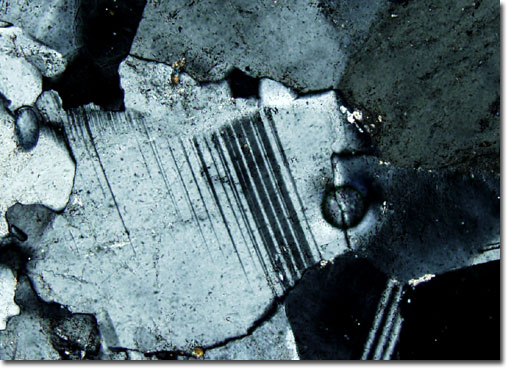|
Diorite gneiss chiefly consists of sodium-rich plagioclase feldspar, quartz, and hornblende, as well as minor amounts of biotite, sphene, or other accessory minerals. Depending on the exact mineral constituents and their relative abundance, the rock may exhibit an overall light or dark appearance, though all varieties exhibit the distinct banding effect characteristic of gneiss. When polished, diorite gneiss displays a good luster, resulting in its heavy use for sculptures in ancient Egypt, where significant quantities of the stone could be found. In fact one of the most famous and spectacular sculptures from that civilization, a large statue of Khafre, a king of the fourth dynasty that built the second of the three Pyramids of Giza, is composed of the material.
|
